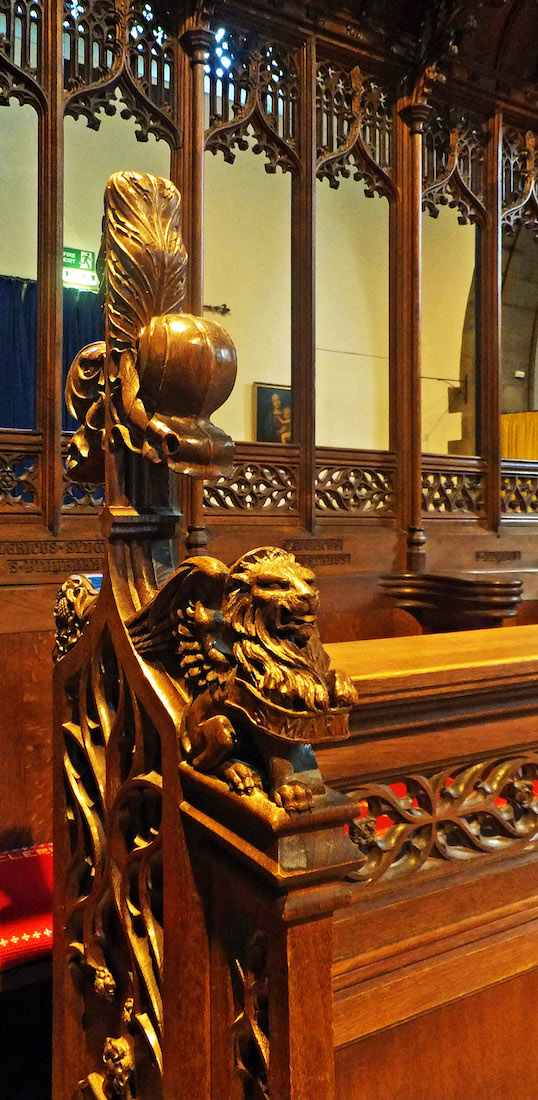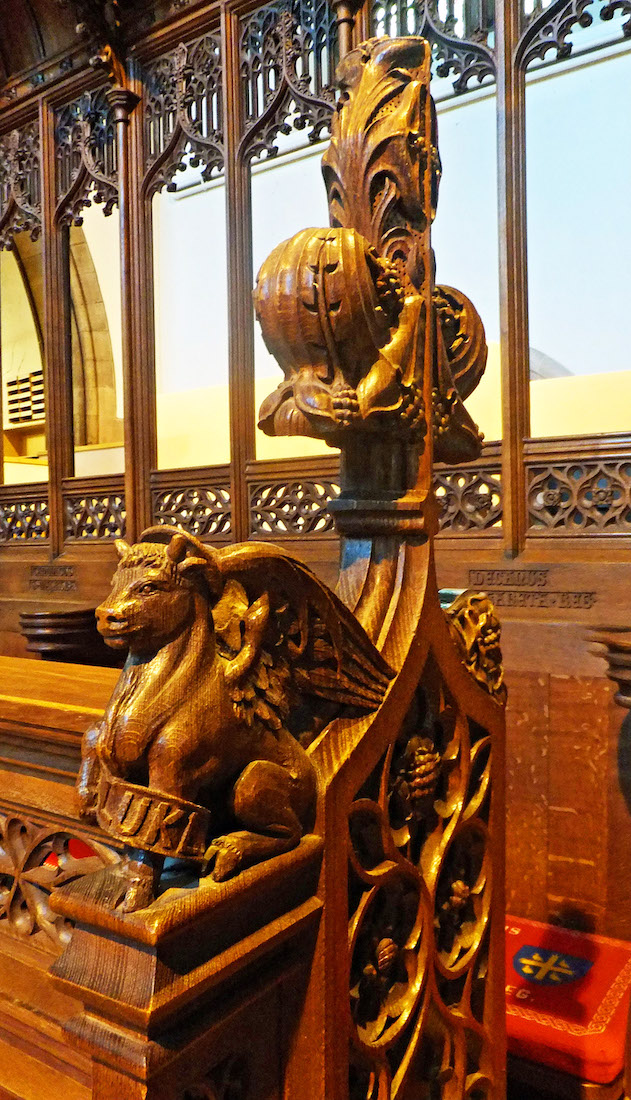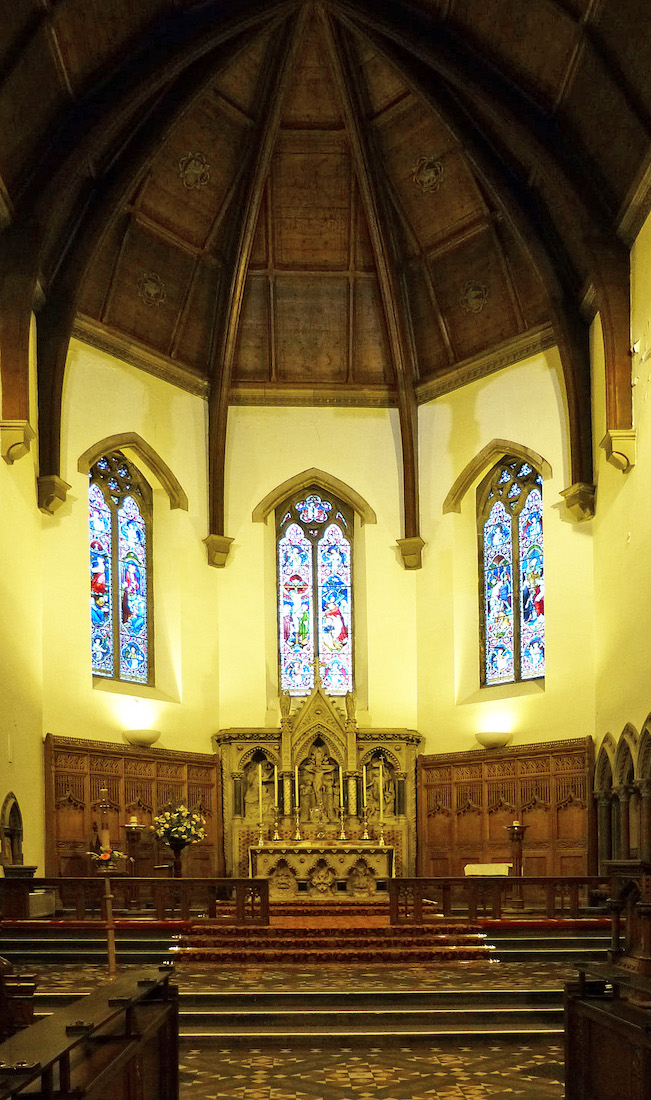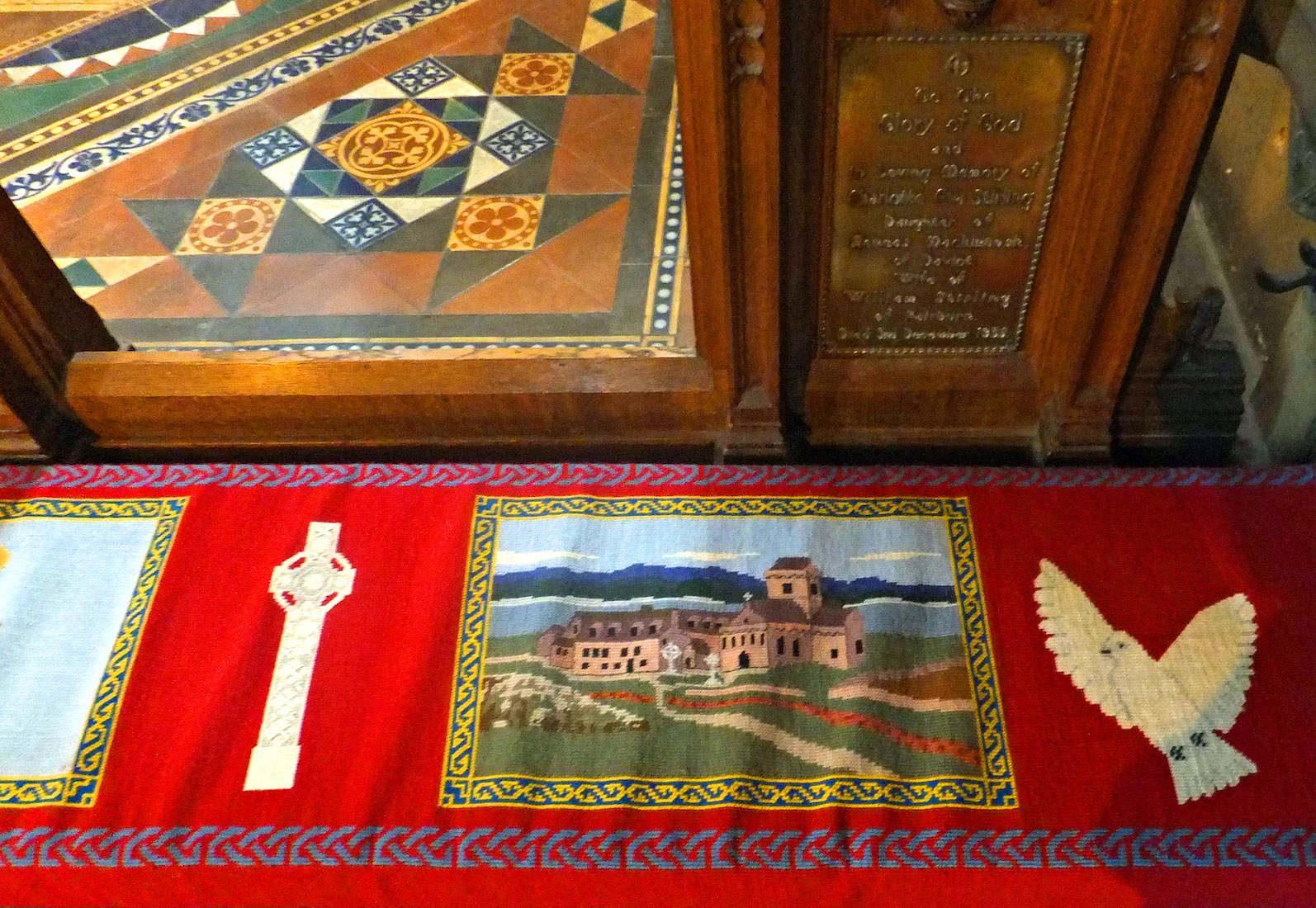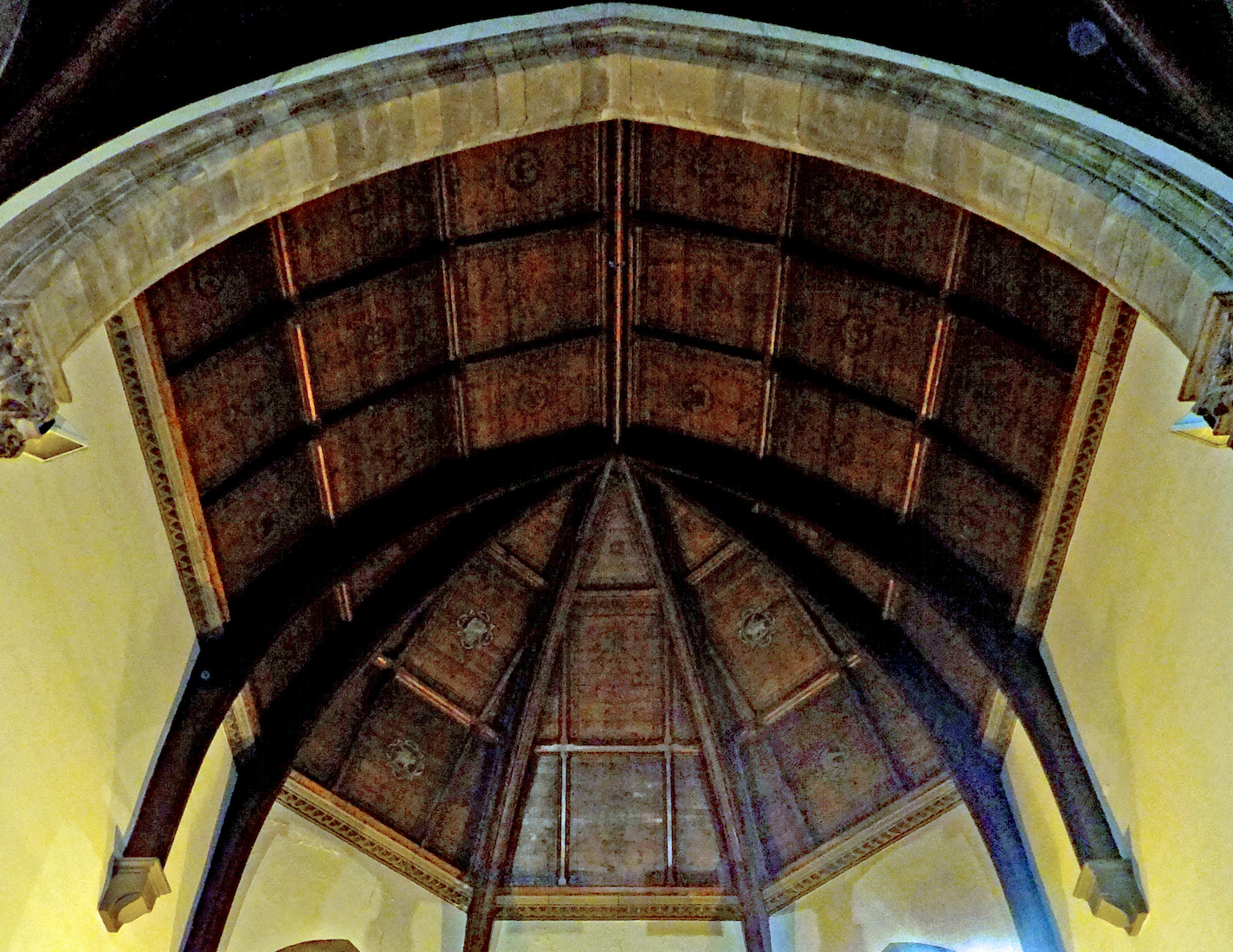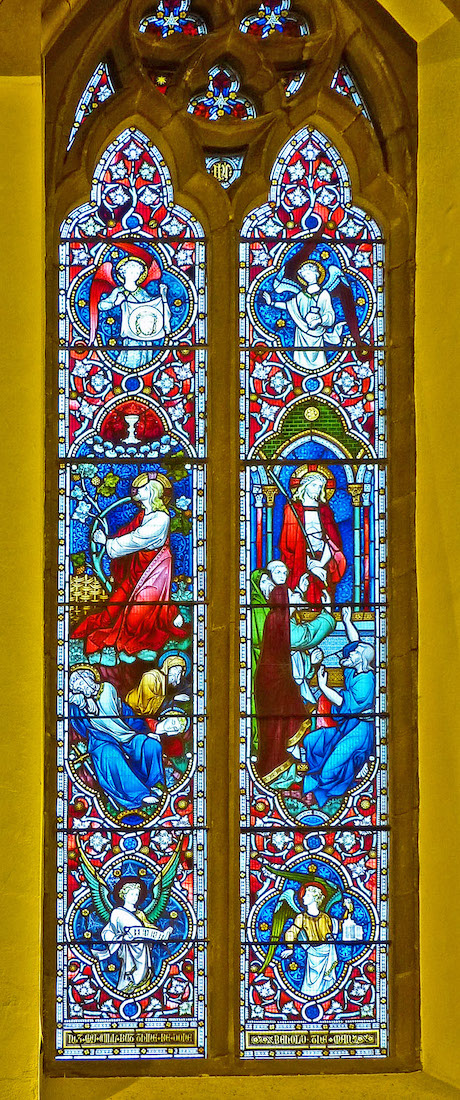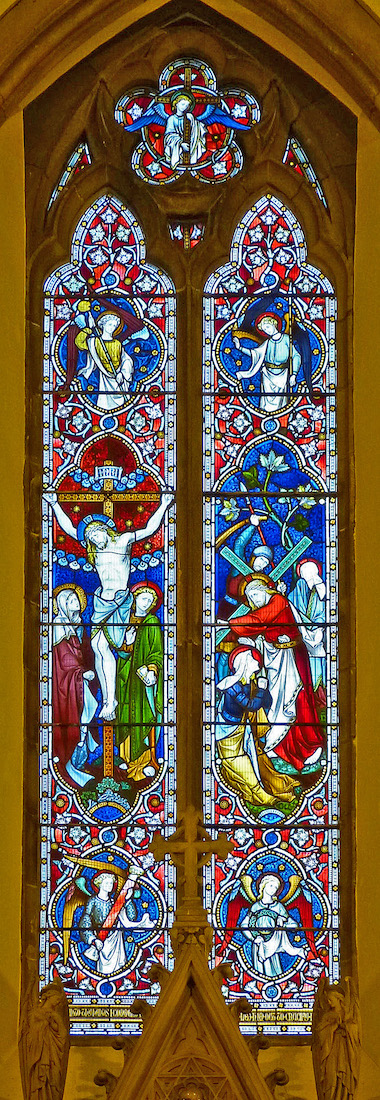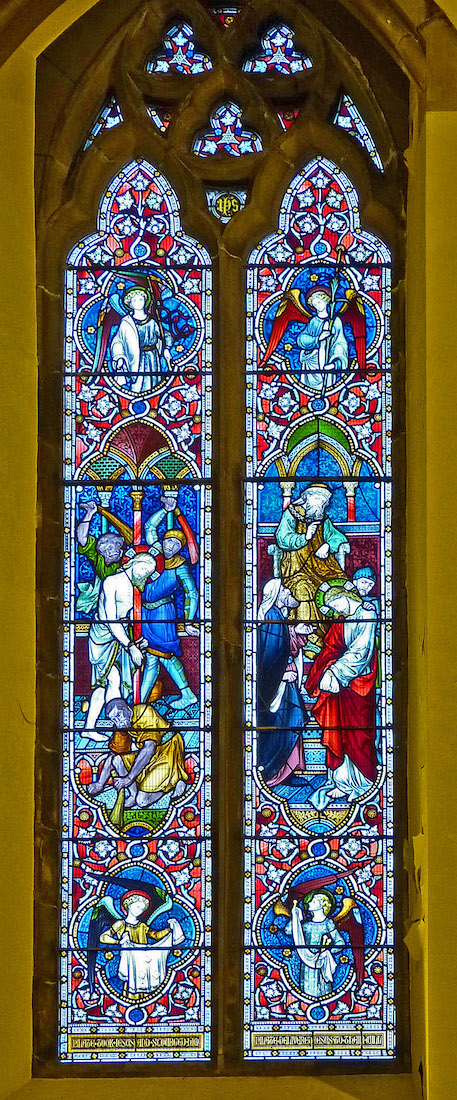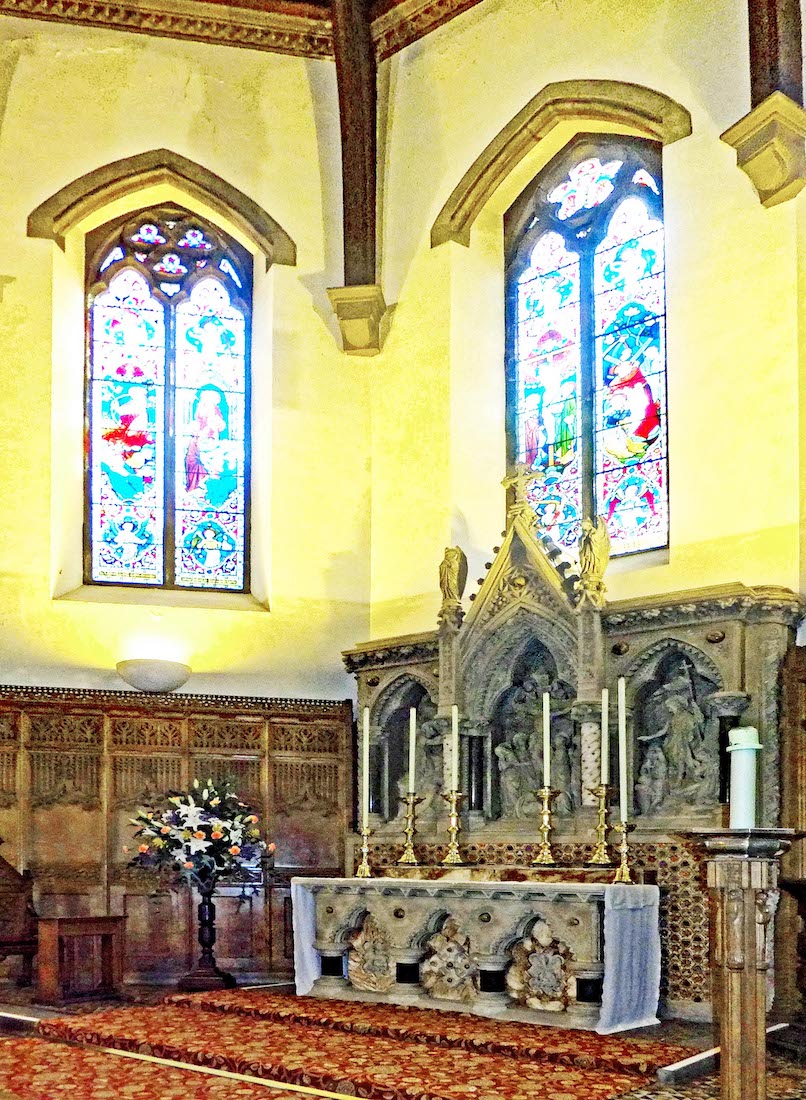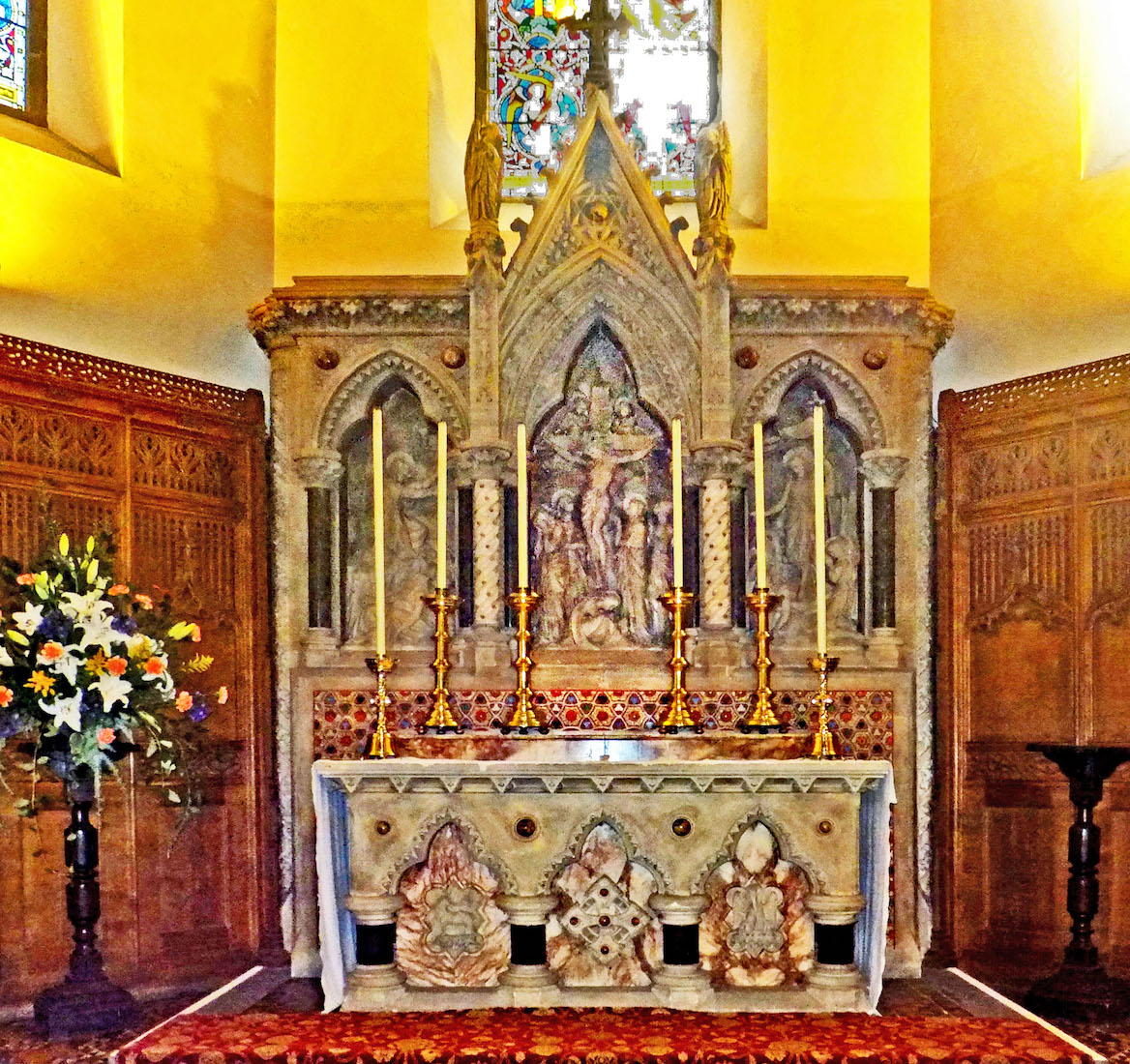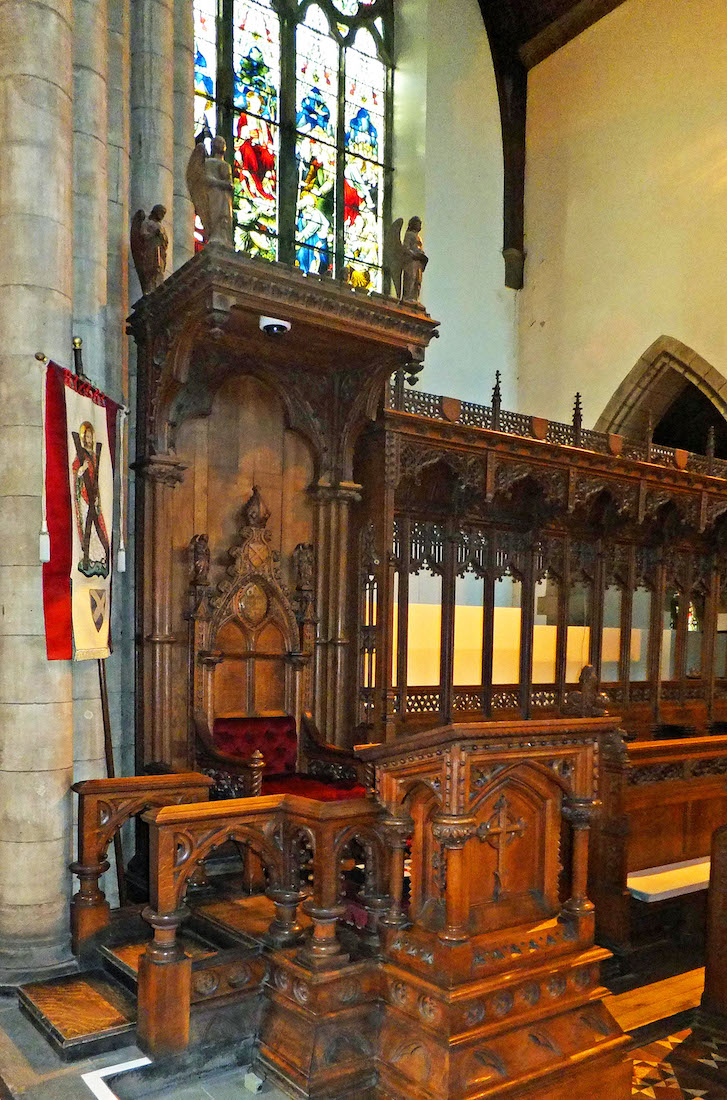
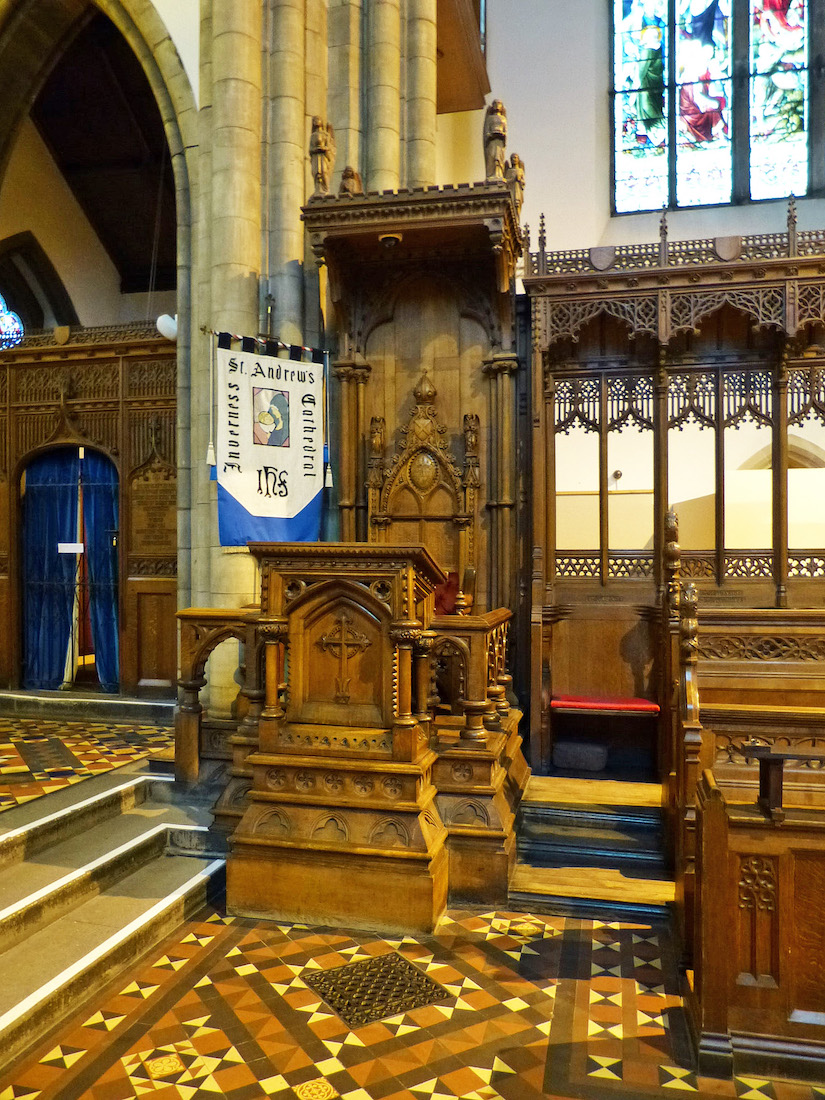
Every cathedral has a bishop’s throne or chair. A bishop has oversight of a group of churches called a diocese. One of those churches – usually the biggest and best! – is specially chosen to house the bishop’s throne or cathedra (from the Latin). It is from the presence of the cathedra that the chosen church gains the name ‘cathedral’. This cathedra was carved locally, and is the only surviving piece of the original woodwork in the chancel. INDEX
42. NORTH CHOIR STALLS JG
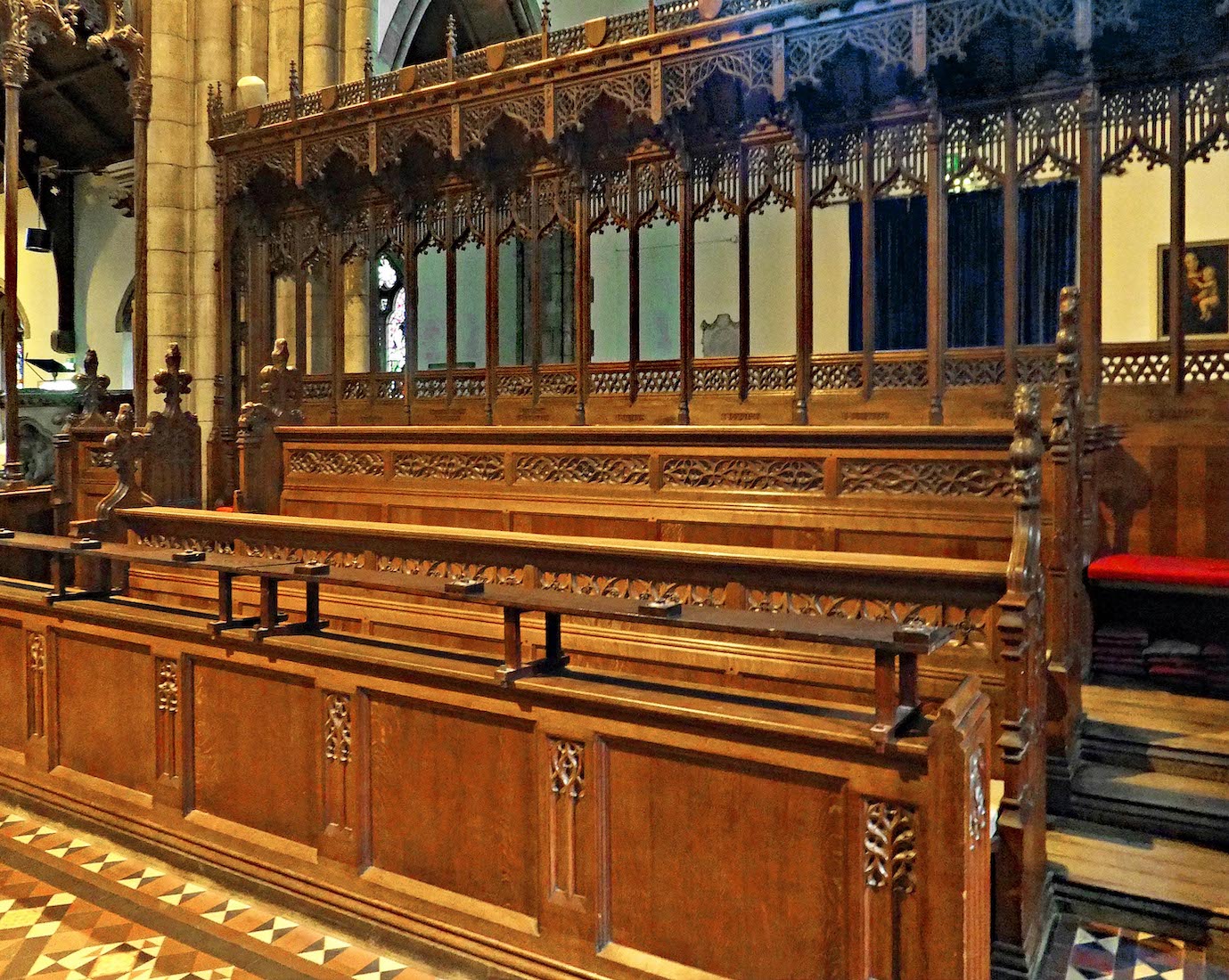
The choir stalls are not as elaborate as some, but are delicately carved, like the choir screen. The stalls are made from Austrian oak and were added in 1909. The Cathedral has a voluntary choir of around 20 voices, men and women, singing for the 11 a.m. Eucharist Sunday by Sunday.
43. CHOIR CARVINGS JG JG
There are some carved treats to look out for though – on the ends of the pews.
45. KNEELERS JG JG
Just in front of the low railing we find a set of decorated tapestry kneelers. On occasions when communion is served from the high altar – probably a rare event these days – parishioners would come and kneel on these kneelers to receive the bread and the wine.
46. APSE ROOF JG
The apse roof is made up of fitted timber panels with faint decoration. I always enjoy the geometry of apse roofs!
47. APSE WINDOWS MJ MJ MJ
The stained glass windows in the apse, like the windows in the transepts and nave, are all by the London firm of Hardman and Co. These apse windows date from 1869-70. They show Jesus in the Garden of Gethsemane, the route to Calvary, the Crucifixion, and the Resurrection. For a closer look at these windows, click here.
48. HIGH ALTAR JG JG
The High Altar and Reredos are of Caen stone. The panels in the Reredos are: the Agony in the Garden; the Crucifixion; and the Resurrection. This completes our tour of the Cathedral Church of St Andrew in Inverness.
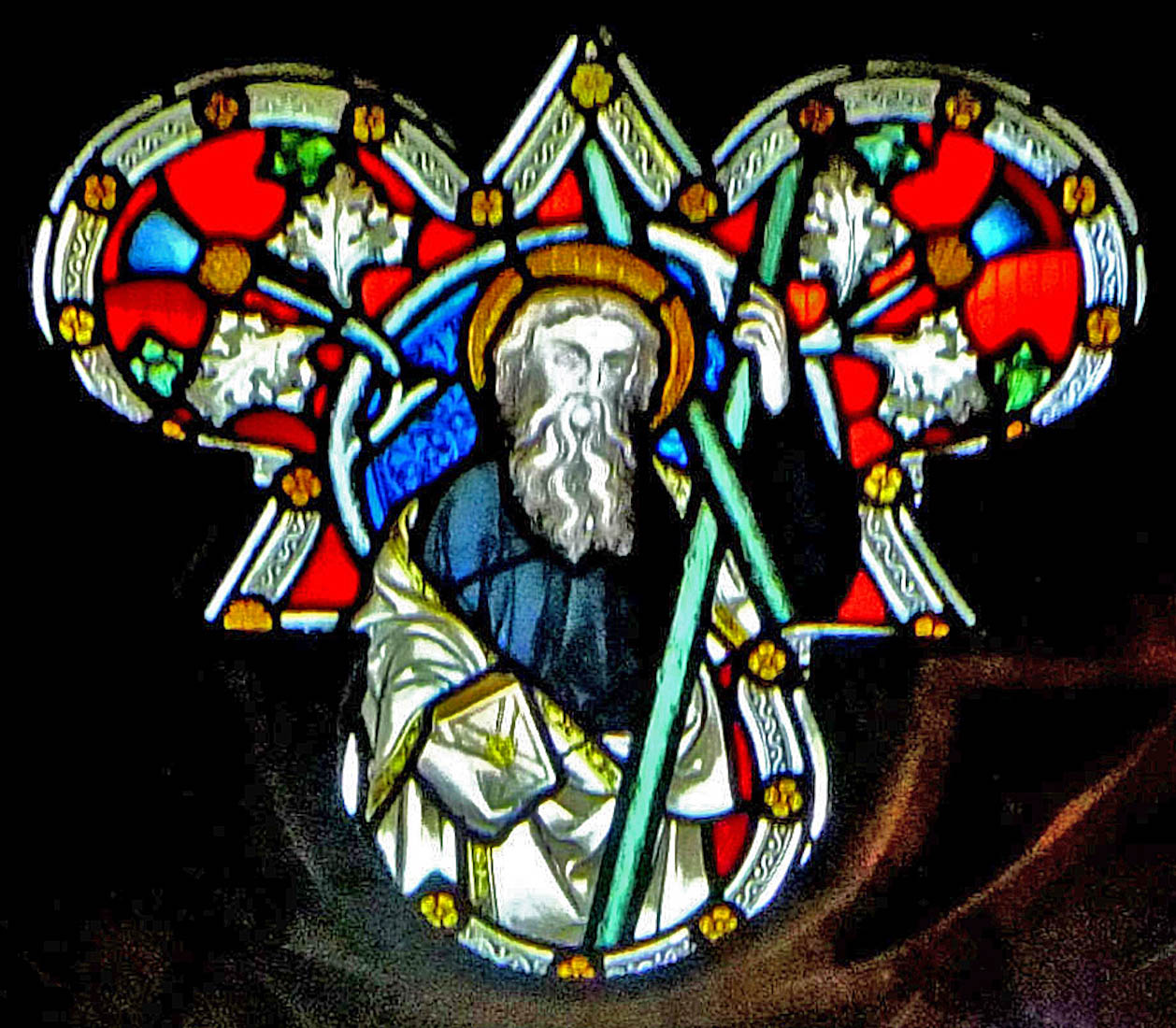
St Andrew
CONCLUSION JG
I hope you have enjoyed visiting Inverness Cathedral with me. It is an attractive little Cathedral, and worth a visit!
The main contributing photographers to this site are ‘Grangeburn’ and ‘Maljoe’. I am very grateful to them for their readiness to share their photos. Their contributions are denoted by initials: JG (Grangeburn) and MJ (Maljoe). Originals of these photos can be found under the following links:
https://www.flickr.com/photos/41583834@N03/albums/72157631703819387 [JG]
https://www.flickr.com/photos/mals_uk_buses/albums/72157653875366389 [MJ]
There are also a number of other photographs included here – smaller numbers, but just as valued – which are acknowledged within the text.
I take little credit for the text which comes from a variety of different sources, although I have drawn on the excellent ‘Virtual Tour’ notes of Inverness Cathedral found in
https://morayepiscopalchurch.scot/inverness-cathedral/tour-cathedral/
and notes on the windows in
https://victorianweb.org/art/stainedglass/hardman/
I also express my thanks to my wife Margie who dutifully reads through all my websites and checks the typing.
I would be glad to receive any comments, criticisms or corrections to this site. The best websites are those which contain no errors!
Inverness Cathedral has its own website with link:
https://invernesscathedral.org
Site created 09 / 2021
Paul Scott

